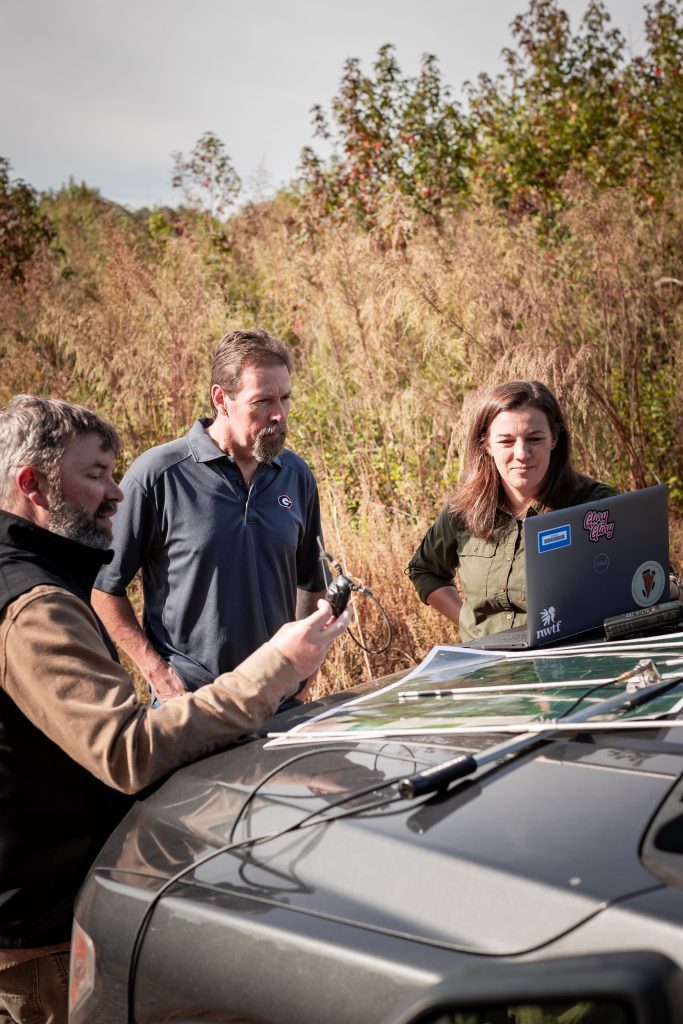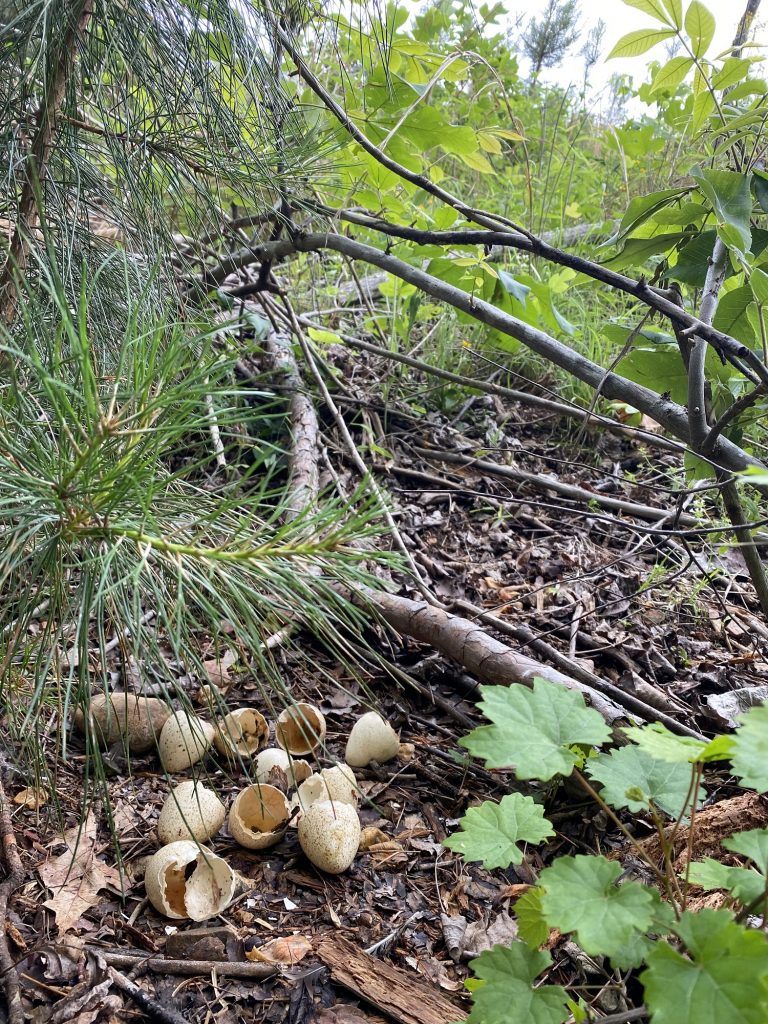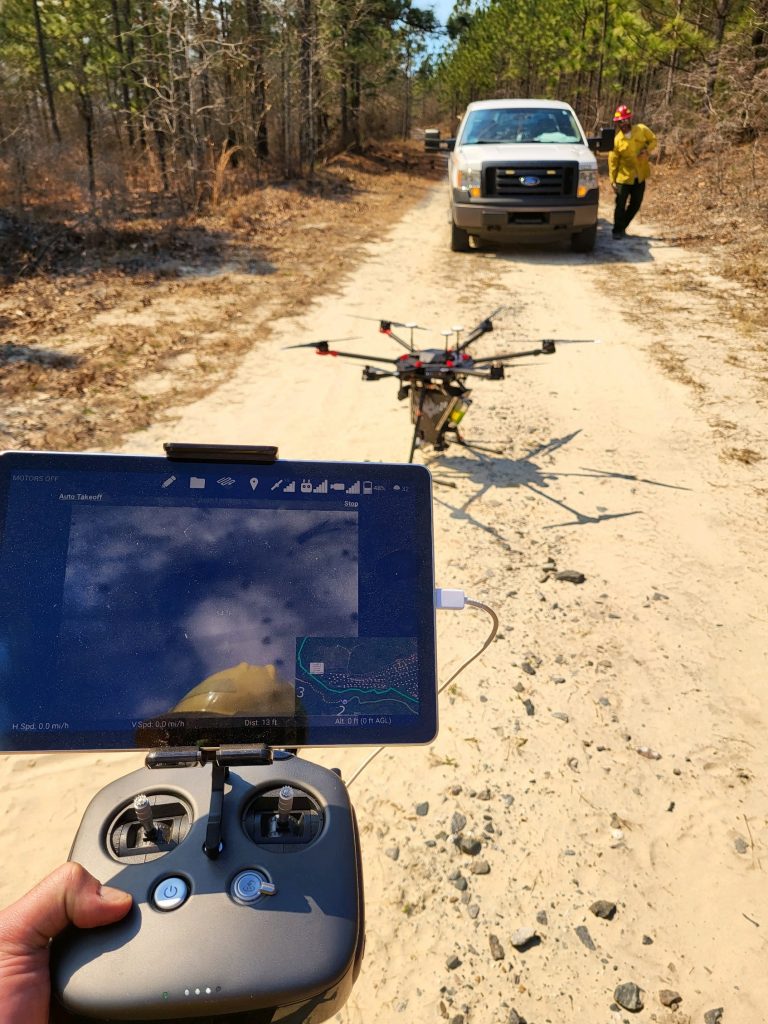The Next 50 Years
In the face of downturns in wild turkey populations that were built to incredible levels during the NWTF’s first five decades, more research and attention is being given to the future of our great game bird than ever before.
What will the next 50 years of turkey populations and hunting look like? To get a better idea, it’s important to look at how much has changed over the last 50 years since wild turkey restoration efforts were first launched in earnest. Lucky for us, leading biologists, scientists and the NWTF are working diligently to sustain successes and address areas where turkey populations are creating concern.
Looking at wild turkey conservation and how that impacts outdoorsmen and women into the future, we asked these experts for their thoughts on the future: Dr. Mike Chamberlain from the University of Georgia, Dr. Bret Collier from Louisiana State University, Senior Wildlife Biologist Dr. Chad Lehman from South Dakota Game, Fish and Parks, and Mark Hatfield, NWTF’s national director of Conservation Services. Their expertise helps shape some perspectives of how the next 50 years of turkey conservation might look from a research, governmental agency and conservation organization point of view.
Reason for Optimism
There is strength in numbers. Standing with the NWTF are its members, state wildlife agencies, federal partners like the USDA Forest Service, and corporate partners like Mossy Oak, Bass Pro Shops and Cabela’s and many others. The NWTF is helping fund and facilitate research, which leads to recommendations, and recommendations lead to action ― universities, state and federal agencies, and volunteers with boots on the ground, working to improve wildlife habitat and continue our hunting heritage.
“We are doing a better job of working across boundaries, standardizing data, and we’re looking at things on a larger scale now,” Hatfield said. “There are numerous projects going on now that include three, four or five states, so there’s added collaboration. These projects we’re funding now have a scale we’ve never seen before. Technology is giving us access to more information to make better conclusions.”
Lehman points out that private land biologists in South Dakota are helping ranchers understand the importance of improving turkey habitat. This is happening in multiple states, and together, landowners and state biologists are developing strategies to positively impact habitat. In South Dakota, Lehman notes, participating ranchers often lease the property to the state for hunters to use. This program is proving popular and has a high rancher retention rate.
The Challenges
Declining wild turkey populations in some regions are roundly understood – although several states’ populations are seeing instability, fluctuating up and down as they have for decades. Experts acknowledge that turkey populations overall are in decline due to previous and emerging threats. They also recognize that no magic bullet is available to remedy that situation quickly. Weather, poor nesting and brooding habitat, lack of land management, development and land use changes, predators and more are all believed to be culprits in the decline. Research continues to look for other contributing factors, but data proves that areas with poor nesting and brooding habitats will see populations decline. The positive is that habitat problems are often solvable, and experts agree that work in this area is a primary path to improved turkey numbers.
LSU’s Collier believes the population decline was caught early enough to do something about it.

“I have concerns, but thus far the states are doing a pretty good job at addressing those concerns and implementing actions,” he said. “We are using the science to better focus efforts to reduce the rate of decline.”
UGA’s Chamberlain, who began his work in 1993, is seeing more active research and discussion now than at any time in his career. He noted the slow decline of poult production across the South and other areas that was never drastic enough to cause major concern, but it was evident when viewed from a 20-year perspective. In about 2005-06, he noted, turkey harvests increased while poult production began to lag.

“It wasn’t enough of a decline to say we’ve got a problem here,” he said. “Now, in 2023, the metrics indicate there is still some decline, while others have stabilized, but we’re not where we want it to be. We want (hens) to be making more turkeys than (they) are.”
Private versus Public Land Management
The biggest challenge to improving nesting and brooding cover is addressing the need for turkey habitat management on private lands. NWTF’s Hatfield said he is noticing a decline in the number of turkey hunters, resulting in a decrease in conservation support. The same holds true for new landowners. As land is bought and sold, new ownership often is not involved in land management. New owners often imagine the thicker the cover, the better it is for wildlife, but wildlife science data does not support that assumption.
Collier and his teams are noticing more turkeys using land along roadways. Why? Research shows that brooding habitat is so poor and thick in some areas that turkeys are literally forced to the ditch, finding land along roadways more accommodating. Urban sprawl in Florida also is forcing Osceola wild turkeys closer to roadways because of lacking habitat. This land may be more hospitable than the choked forests nearby, but they are typically poor choices for turkeys to attempt a nest. The same holds true for Merriam’s in the Black Hills.
Confronted with the challenges noted above, state wildlife agencies are making tough decisions, among them revisions to season lengths and bag limits. At this point, it’s simple math: sustaining harvest rates in areas where not enough poults survive to adulthood is a recipe for disaster. Chamberlain has maintained that nest success rates, followed by poult survival, is astoundingly low in recent years: 20-22% of hens nesting are successful, and of those few poults that hatch, about 65% die within the first month.
The NWTF’s Habitat for the Hatch initiative, a 10-year plan to create nesting and brooding habitats near each other to improve poult survival rates, and multiple ongoing research projects nationwide are aimed at helping to correct the issue.
Hatfield also points to providing a “social license” to state agency decision-makers, allowing them to make the right moves to get back to where populations once were.
Predictions and Hopes
One theme becomes clear as we begin this next 50 years of work with wild turkey conservation: research must drive the decision-making. From university scientists to biologists from the NWTF and state agencies to the countless volunteers across the nation, a spirit of collaboration and improved sharing of information is emerging. There is a positive vibe — indeed, confidence — that the next 50 years can see sustained or improved wild turkey numbers, with data-driven successes fueled by people passionate about America’s greatest game bird.
Chamberlain, self-described as an eternal pessimist, sees an improved future based on current trends.
“One thing that gives me optimism is that there are people listening, paying attention and willing to take the information and make a change,” he said. “Where we likely would not have done something five years ago, now people have more concern and love for this resource. That gives me hope.”
Conservation Technology Improving

Improvements in technology and data-gathering tools are enabling biologists and scientists to be more efficient and precise. Here are a few tools that will help drive turkey conservation research into the future.
Turkey Drones
Biologists are using drones to identify poor nesting and brooding habitat. Drones can later be used, after improvements on the ground, to quickly assess the effectiveness of the work.
Talking Turkey
The NWTF and other credible sources not only use print to keep the public informed, but use social media, podcasts and other technology. Chamberlain also has an informative Turkey Tuesdays social media post each week and runs the Wild Turkey Lab website (https://wildturkeylab.com/) that features the latest wild turkey research from around the country. The NWTF is now a partner in the website’s work.
Turkey Tracking
Researchers use GPS tracking technology to monitor turkey movement and harvests across all subspecies. Refinements here enable pinpoint evaluation, providing, for example, valuable information to help determine why a hen chose one nesting or brooding habitat over another.
State Wildlife Agency Harvest Reporting
Online harvest reporting apps continue to be refined, increasing the amount of available harvest data, and are useful tools to help determine future season lengths and bag limits.
CONNECT WITH US
National Wild Turkey Federation
770 Augusta Road, Edgefield, SC 29824
(800) 843-6983
National Wild Turkey Federation. All rights reserved.
